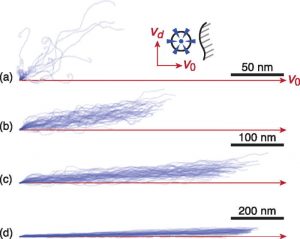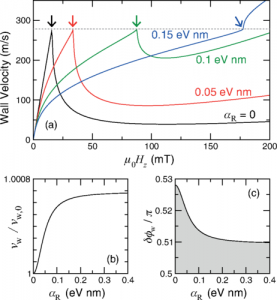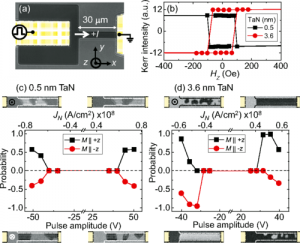In a collaboration with colleagues at Johannes Gutenberg-Universität Mainz, Uppsala Universitet, and Christian-Albrechts-Universität zu Kiel, we have shown theoretically that skyrmions and antiskyrmions can behave very differently under spin-orbit torques. One key finding is that antiskyrmions can undergo trochoidal motion, which is analogous to Walker breakdown in domain wall dynamics. This threshold defines a speed limit for rectilinear displacement. Another is the onset of skrymion-antiskyrmion pair generation under large damping-like torques, which results in a gas with excess skyrmions. This imbalance in matter-antimatter production is a consequence of the asymmetric dynamics at high energies.
This work recently appeared in Nature Electronics.
Reference: U. Ritzmann, S. von Malottki, J.-V. Kim et al., Nat. Electron. 1, 451–457 (2018).
Magnetic antiparticles offer new horizons for information technologies @uni_mainz_eng @NatureElectron https://t.co/67SIemFFcx
— Phys.org (@physorg_com) August 15, 2018
"we naturally assumed that the kinematics of antiskyrmions could be described by simply changing the sign of the topological charge in the Thiele equation, but we have found that things aren’t as simple as this” https://t.co/vN7UePMhw5 #skyrmion pic.twitter.com/18OA7DFLzq
— Physics World (@PhysicsWorld) August 24, 2018


